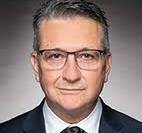CP Rail had a record year in 1998 with operating income of $721 million and a profit of $347 million, according to the annual report of parent company Canadian Pacific.
Yet declining grain movement meant that the prairie grain industry was not a star in the railway’s record performance.
Grain revenues were down “as customers held back shipments in the face of weak prices,” said the report.
By year-end, grain movement produced revenues of $771 million for the railway, down from $845 million in the grain volume boom year of 1997.
Read Also

Going beyond “Resistant” on crop seed labels
Variety resistance is getting more specific on crop disease pathogens, but that information must be conveyed in a way that actually helps producers make rotation decisions.
Meanwhile, the company invested $1 billion last year to buy new locomotives and to improve some track, “the highest (expenditure) in the railway’s four-year infrastructure and locomotive renewal program.”
CP reported “market gains” in the United States last year because of “better service levels.” It said it had a plan to improve Canadian performance.
“The railway is committed to improving service quality and increasing market share with a focus on having new high-throughput elevators built on its lines in Canada,” the report said.
The rail company also noted that during 1998, it shed another 290 employees to get its work force down to 19,860 compared to more than 23,000 four years ago. And during the year, it shed another 250 miles of “non-core” rail line.
When the CP report is presented to shareholders at the company’s April 20 annual meeting in Calgary, it will be just part of the package. The parent company also has hotel, shipping and mineral subsidiaries.
Overall, the company report will be a combination of good news and bad news.
“Our financial performance deteriorated in 1998,” CP president David O’Brien wrote to shareholders.
The CP parent company saw profits fall because of weak results from oil and coal subsidiaries.
Still, it remained a highly profitable company.
Net income for the parent company fell to $801.3 million from $1.256 billion the previous year.
















